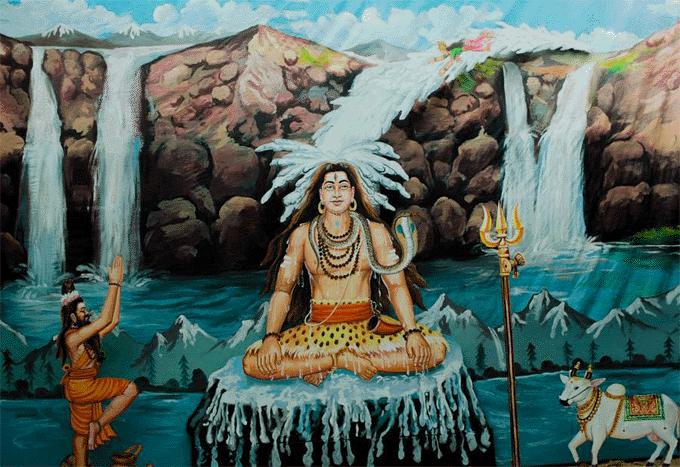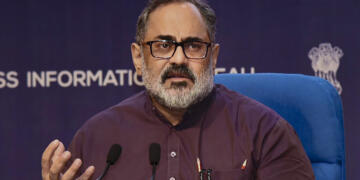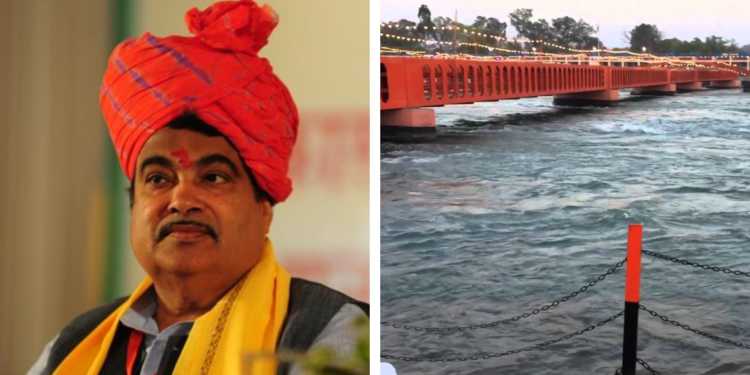River Ganga finds its place right in the soul of Santana Dharma. Since time immemorial, the river not only has nurtured millions of Indians with its water, rains and crops in its massive basin, but it has been revered as the mother goddess who gives life, washes off our sins and cleanses our souls. For Hindus worldwide, the river is our passage of unity with the divine. Wherever we die, we attain moksha if our ashes are offered to Ganga.
Ancient Scriptures tell us an interesting tale about the tough penance of King Bhagirath who succeeds in getting river Ganga on the Earth who provides Moksha to the ancestors of the King.
While the importance of Ganga and the reverence of it has been a consistent feature of Sanatan Dharma but it is also an unsettling reality that contamination of the same river and the pollution levels in the areas around it has reached to alarming levels.
Increasing population levels and the onslaught of industrialisation has started to choke Ganga. In 1985, the pollution levels first came to nationwide attention when the river caught fire! Yes, a matchstick tossed by a careless smoker in Kanpur led to a widespread fire in the river, the solid waste and toxic gasses released from the sewages was so large in quantity and inflammable in nature that the fire took about 30 hours to extinguish. What followed was a famous PIL by environmental lawyer and social activist M C Mehta, known as M C Mehta vs the union of India. He held all the 75 tanneries of Kanpur, UP State pollution control board and the municipal corporation of Kanpur accountable. In a landmark judgement, the Supreme court asked the govt bodies to take necessary steps and directed the tanneries of Kanpur to either adhere to laws or shut down.
After the judgement, several other Govt initiated programs and missions followed, billions of rupees were spent but there was no significant change on ground level. Industries continued to dump solid waste, tanneries kept on adding toxic water and bio-waste, and due to lack of strict action and awareness programs even people continued dumping domestic waste and religious offerings and half burned corpses into the riverbed. So, after all the pomp and ceremony the results on ground level were still zero.
There has neither been a dearth of funds nor lack of programs and missions to clean Ganga. The Ganga Action Plan or GAP phase 1 was launched by Rajiv Gandhi back in the eighties, it was followed by phase 2 or GAP in 1993, There were no visible results. Ganga remained polluted. It’s the fifth most polluted river on the planet.
The environmental, demographic and biological impacts of it are colossal. Consider the following:
1.) The river emanates from Go-Mukh in Uttarakhand and culminates into the Bay of Bengal. A total course of 2500 kms
2.) The total area of the Ganga river basin, including its main tributaries is calculated at 860,000 square kms
3.) Considering its tributaries, agricultural and industrial dependency, about 40% of the entire Indian population depends on Ganga one way or the other.
4.) All industries, agriculture and livelihoods considered, the river accounts for a GDP of 700 billion USD
If the above points have made the economic importance of Ganga clear, then Consider this:
1.) According to a world bank survey 12% of the total number of diseases in UP are due to the polluted Ganga water
2.) 1.7 billion litres of domestic waste are dumped into the river daily
3.) 3.89 million litres of sewage are dumped untreated into the river every day
4.) According to the same world bank study, the level of pollutants in the river water is 3000 times that of “healthy” levels.
Government Policies
As I mentioned earlier, that there has been no lack of them, at least on on paper. But the results are still minimal and questionable. Manmohan Singh govt formed the National Ganga River Basin Authority. There were movements involving Swami Nigamanand Saraswati and Anna Hazare, but as fate would have it, the dreams of a clean and free flowing (Swachh, aviral Ganga) remained only a distant dream.
Prime minister Narendra Modi kept Ganga cleaning on top of his agendas. So, after assuming office in 2014 he gave the charge to Uma Bharti the then minister for water resources. As per 2016 data, more than 2000 crores Rs has been disbursed for various projects. But sadly, as it happened with other Governments, Swacch Ganga remained a distant dream. Amidst criticism for the inaction, the charge of the ministry has been given to Mr. Nitin Gadkari, the “Go Getter” minister of the BJP govt.
Can Nitin Gadkari Save River Ganga?
Nitin Gadkari ji has been a stellar performer as far as timely delivery of work is concerned. His style was seen in the National highway expansions. His signature move is “road block removal”. He has been known for minimising and mostly dissolving inter departmental and inter Agency blocks in several big projects. He is also tech savvy and economically efficient.
Within days of assuming office, Mr. Gadkari announced a task force formed of personnel from ministry of water resources, Urban development, drinking water and sanitation. While there was a lot of criticism for Ms Uma Bharti’s work, Mr. Gadkari praised her for doing a lot of foundational work and building a base from where he can take it ahead. Gadkari has now fast tracked all projects and set targets. Following an announcement by PM Modi of further allocation of funds up to 20,000 crores till 2020, he is now a man on a mission.
In October 2017, Mr. Gadkari signed a tripartite agreement with the private sector for setting up of 2 sewage treatment plants (STPs) is Haridwar and Varanasi respectively. In his unique style he has set up the projects according to a brilliant Hybrid Annuity Model. As per the model, the construction, operation and maintenance of the STPs are to be taken by the winning bidder. As per this model, 40% of the quoted capital cost will be paid on completion of construction while the remaining 60% of the cost will be paid over 15 years as annuities. This will include the operation and maintenance expenses.
Here lies the Gadkari Style rider – the payments of the Annuity and O&M costs are linked to the performance of the STPs. No work, no pay. This model has already been implemented by Mr. Gadkari in national highway projects and has been a hugely successful one. The mission has planned 14 more such STPs in the cities of Prayag, Kanpur, Farrukhabad, Patna, Bhagalpur, Kolkata and Howrah. The bidding process is to be completed by December and work orders will be issued by March next year.
Gadkari doesn’t stop at that. The Namami Gange mission is to be a comprehensive, inclusive program which also emphasizes on public awareness, improvement of sanitation and waste management, industrial regulation and sustainable development. Work is already underway in 4500 villages along the Ganga to plant saplings on the river banks. The saplings are to be geo tagged so their development and maintained is tracked on real time basis.
In his recent tour to UK Mr. Gadkari took the public private partnership (PPP) for clean Ganga projects to a whole new level. He has opened talks and roped in global business powers to invest in the project. In UK alone, he obtained investments worth about 500 crores. Vedanta group chairman Mr. Anil Agarwal has promised to undertake regeneration of the Patna riverfront, shipping tycoon Ravi Mehrotra has undertook the same task for Kanpur; the Hinduja Group will be taking care of the Ghats of Haridwar and Indorama Group head Sri Prakash Lochia will take on development work of Ganga Sagar in Kolkata.
Finally, after long, there is fresh hope that we may see a Swachh (clean) and Aviral (unstopped) Ganga in the future. A Swachh and Aviral Ganga will be the beacon of hope and positivity for countless generations to come. There was once a Bhagirath who brought Ganga from heaven to earth.






























